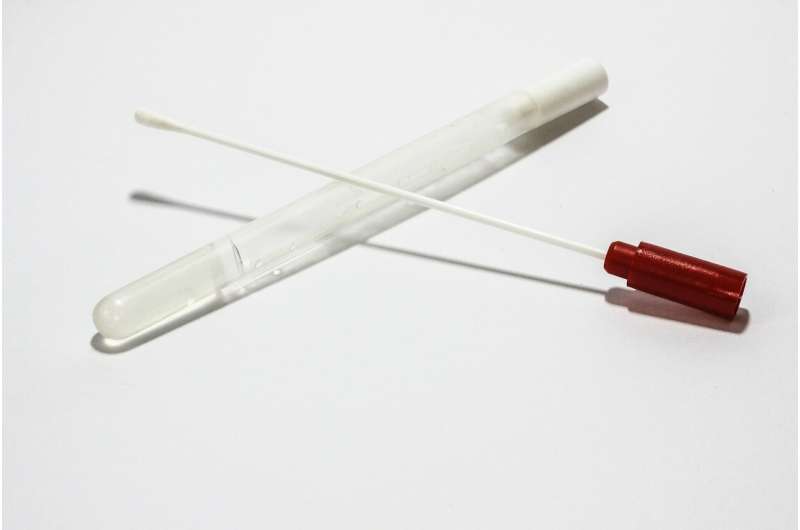First NZ study to diagnostically validate COVID-19 saliva testing

Scientists at Te Herenga Waka—Victoria University of Wellington have used real-world samples to confirm the 98.7 percent accuracy of a saliva test for COVID-19. This is the first, and currently the only, COVID-19 saliva test to be diagnostically validated in Aotearoa New Zealand.
Associate Professor Janet Pitman from the University’s Te Kura Mātauranga Koiora—School of Biological Sciences led the study. “Despite a view that saliva tests aren’t as accurate as the standard nasopharyngeal test, our research shows this one is,” she says. A paper describing the study has been prepared and submitted for publication in a medical journal.
Initial testing was carried out on artificially infected saliva, where heat-inactivated SARS-CoV-2 virus, which causes COVID-19, was added to saliva in the lab. The now-completed diagnostic validation involved testing samples from actual positive COVID-19 patients.
Associate Professor Pitman’s team tested paired samples, sent from the United States, from 152 people. The paired samples were a sample of saliva and a sample from a nasal swab taken at the same time. Thirty-four of these people were positive for COVID-19.
In all but two instances, the results matched—in one instance the saliva sample tested positive when the nasopharyngeal sample didn’t, and in the other the reverse occurred. The discordance between the two samples is likely not due to a failing of either test. It is more likely due to differences in the timing of the virus’s presence during the early stages, and disappearance during the late stages, of the disease at the two biological sites (salivary glands and the nasopharyngeal region). Salivary glands contain large numbers of cells that replicate the virus and are then shed into the saliva, making saliva a great indicator of live virus production.
The researchers’ results showed the test is highly sensitive. “An infectious person has about 1,000 viral copies of SARS-CoV-2 per microlitre of saliva, equivalent to one thousandth of a milliliter,” says Associate Professor Pitman. “Our test can measure one copy in this volume. It is as sensitive as the standard nasopharyngeal test. We found this test is sensitive enough to measure asymptomatic people well before they become infectious.”
Associate Professor Pitman says there are many advantages to this method. “The great thing about saliva testing is not only can you use it for detection but also as an ongoing surveillance method to keep an eye on what’s in the community. You can test more regularly as it’s non-invasive.
“I’m not sure how long the public is going to accept the nasopharyngeal ‘brain scrape’ test. With our test, you just let the saliva pool in your mouth, then drool into a spoon, without creating bubbles, and tip it into a tube. However, people must not eat or drink for one hour before providing the saliva sample to ensure a good quality sample.”
There are also other advantages to saliva tests, she says—for example, they don’t require health care professionals to take the sample.
Associate Professor Pitman stresses that COVID tests are going to be part of our lives for years to come.
“This virus isn’t going away, and eventually we’re going to open our borders. What we need is a suite of highly accurate, diagnostically validated saliva tests for SARS-CoV-2. And for that to happen, the information surrounding saliva tests should be transparent and publicly available. We’re going to need these tests in our workplaces to give people peace of mind at work, at our borders to enable people to travel, and within our communities to gauge any outbreaks. The more tools we have in our toolbox to fight this and keep New Zealand safe, the better.”
Source: Read Full Article
